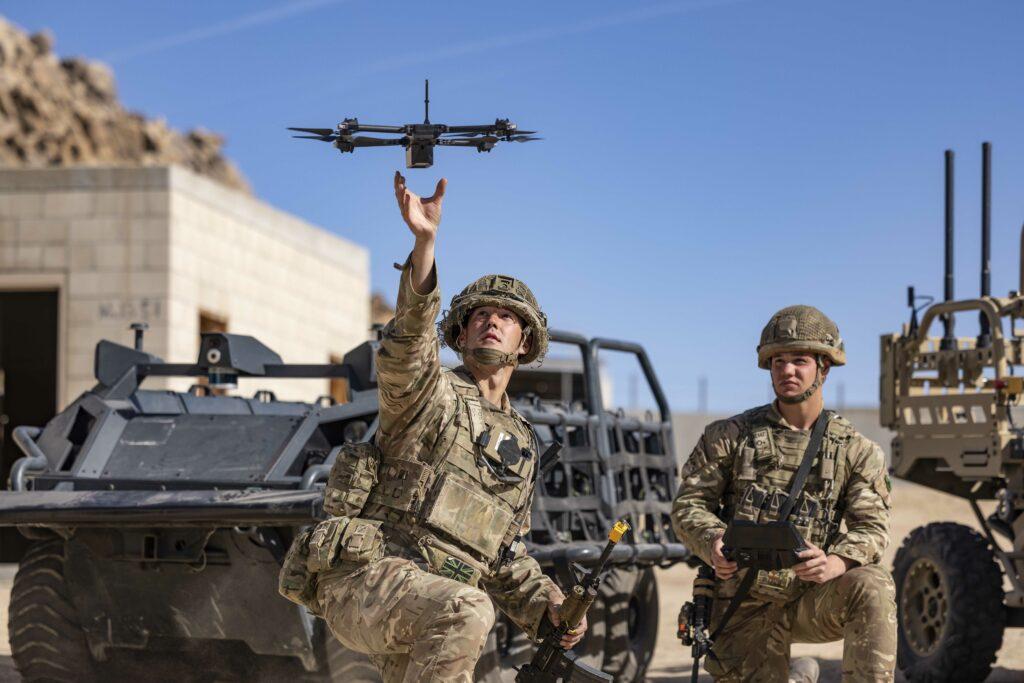During October and November, the 20th Armoured Brigade Combat Team led the British Army’s collaboration with the US and other allies, testing a range of innovative systems in California. Project Convergence is the premier US Army experimentation exercise, seeking to define how the US and international partners, including the UK and Australia, will fight in a multi-domain battlespace.
The UK contribution to Project Convergence is 450 soldiers, testing around 17 cutting-edge systems and technologies, including some being tested for the first time ‘on the ground’. Participation is designed to help make the British Army more lethal on the battlefield, by simplifying and speeding up the ‘sensor-decider-effector’ chain.
As well as testing some of the latest systems, the human capability was also put to the test with the newly-formed Ranger Regiment operating alongside US Special Operations Forces to swap tactics, while 2 YORKS provided reconnaissance and logistical support using their Robotics and Autonomous Systems (RAS) Capability.
Now part of the Land Warfare Centre’s Experimentation & Trials Group, 2 YORKS are testing new variants of the Rheinmetall Missionmaster Unmanned Ground Vehicle, next generation helmet mounted night vision and Dismounted Situational Awareness (DSA). As well as Project Convergence, 2 YORKS were also on Ex CERBERUS in Germany, conducting urban and rural warfare experimentation alongside the validation exercise of 3 (UK) Division’s Brigades and during November, Burma Company will conduct urban experimentation in the unique environment of Portsmouth Docks in the Army Warfighter Experiment.
Project Convergence – An experimentation of many firsts:

| Cookie | Duration | Description |
|---|---|---|
| cookielawinfo-checkbox-analytics | 11 months | This cookie is set by GDPR Cookie Consent plugin. The cookie is used to store the user consent for the cookies in the category "Analytics". |
| cookielawinfo-checkbox-functional | 11 months | The cookie is set by GDPR cookie consent to record the user consent for the cookies in the category "Functional". |
| cookielawinfo-checkbox-necessary | 11 months | This cookie is set by GDPR Cookie Consent plugin. The cookies is used to store the user consent for the cookies in the category "Necessary". |
| cookielawinfo-checkbox-others | 11 months | This cookie is set by GDPR Cookie Consent plugin. The cookie is used to store the user consent for the cookies in the category "Other. |
| cookielawinfo-checkbox-performance | 11 months | This cookie is set by GDPR Cookie Consent plugin. The cookie is used to store the user consent for the cookies in the category "Performance". |
| viewed_cookie_policy | 11 months | The cookie is set by the GDPR Cookie Consent plugin and is used to store whether or not user has consented to the use of cookies. It does not store any personal data. |